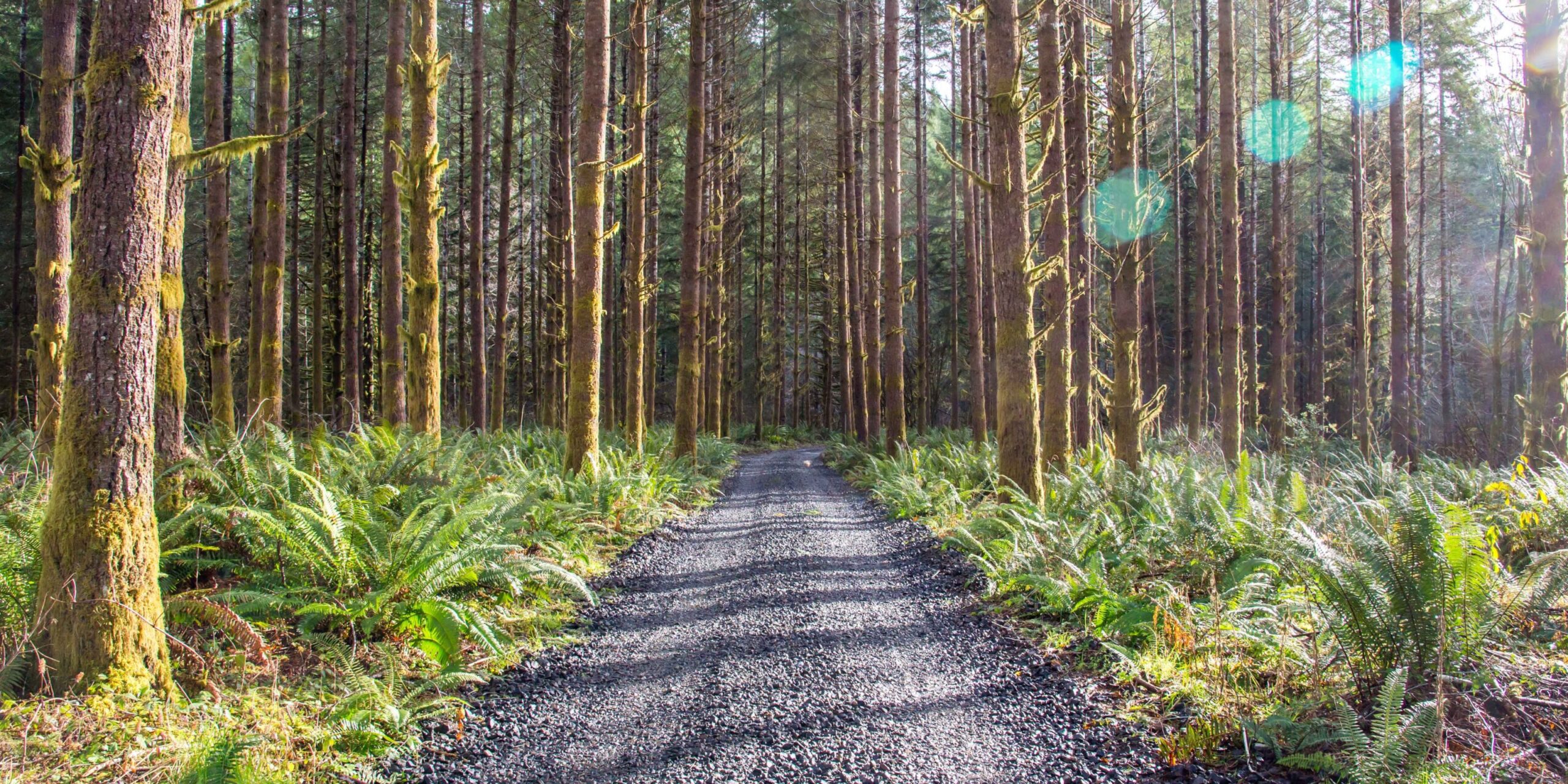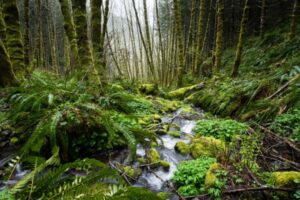
Work. Play. Renew.
Visit Oregon’s 6 State Forests for the Trees and So Much More
Oregon is home to six state forests: Clatsop State Forest, Elliott State Forest, Gilchrist State Forest, Santiam State Forest, Sun Pass State Forest and Tillamook State Forest. There are about 821,000 acres of forest land found here and managed by the Oregon Department of Forestry(ODF).
Oregon forests are filled with natural beauty for you to take in and discover. These state forests are filled with vast trees, wildlife and more. If you’re a nature lover, we encourage you to try to visit them all. Here’s a deeper look at each of the forests and what it has to offer. All you’ll need to do is decide which to visit first.
 1. Clatsop State Forest
1. Clatsop State Forest
Clatsop State Forest is in Clatsop and Columbia Counties, located in the Northern Oregon Coast Range. This state park spans over 136,000 acres. William Clark actually wrote about the area now known as Clatsop State Forest in his journal while on his trek with Meriwether Lewis, stating, “Today I behold the grandest and most pleasing prospects which my eyes ever surveyed.”
That beauty is still there today. The forest is filled with second-growth hemlock, western red cedar and Douglas-fir. You’ll also find many shrubs, ferns, flowers and hardwoods as well. Additionally, there are trails, campgrounds, horse riding opportunities, fishing access, off-highway vehicle areas and more, all for you to enjoy.
2. Elliott State Forest
Established in 1930, Elliott State Forest was Oregon’s first state forest. It’s located in Coos County, in the Southern Oregon Coast Range, and spans over 82,000 acres. This forest is home to a variety of Oregon’s threatened and endangered wildlife species, including the northern spotted owl, the marbled murrelet and both Coho and Chinook salmon. This forest, which is known for Douglas-fir trees, big leaf maples, western hemlock and more, is open to the public, but there is no trail system.
A Habitat Conservation Plan (HCP) is being developed for Elliott State Research Forest. This plan aims to help Oregonians balance research, conservation of rare species and forest management in this valuable forestland.
3. Gilchrist State Forest
Located in Klamath County in southern Oregon, Gilchrist State Forest extends over 70,000 acres. It stretches eastward from US Highway 97 and touches State Highway 31. This is Oregon’s newest state forest, as it was only just formally dedicated in 2010. It’s mostly filled with ponderosa pine and lodgepole trees. Various bird species are found here as well, including the mountain chickadee and turkey vulture.
4. Santiam State Forest
Over 47,000 acres in size, Santiam State Forest is in the northern Oregon Cascades and spans three different counties—Linn, Marion and Clackamas. Today, it’s filled with towering hemlock and Douglas-fir trees.
The Santiam State Forest is one of the lesser-known Oregon forests, as it’s tucked away from most liveable areas. This makes it a good forest for visitors who want a very scenic and more rustic experience. There are high mountain vistas, scenic waterfalls, tranquil lakes, campgrounds and picnic spots for visitors to enjoy. There are also plenty of trails that are perfect for horseback riding, mountain biking or hiking.
5. Sun Pass State Forest
The smallest of Oregon’s state forests is Sun Pass State Forest, spanning just over 21,000 acres. Located in southern Oregon, in Klamath County, it is off the beaten track, which makes it a great spot for rural camping. This forest does not have a formal recreational program, so if you’re looking for a more primitive place to camp, Sun Pass State Forest is for you. While you will likely avoid crowds while camping, there are no public facilities available, so you may want to make it a short stay.
The forest has a cozy ambiance, has lots of beautiful views and sits on layers of basalt rock. There are also two year-round creeks found here, Sun Creek and Annie Creek. Visitors will find a variety of pine and fir trees when they visit Sun Pass State Forest.
6. Tillamook State Forest
The largest of all six of Oregon’s state forests is Tillamook State Forest. It’s over 355,000 acres! This forest is in Washington County, in the Northern Oregon Coast Range. You may have heard of the infamous Tillamook Burn, which was a series of wildfires that happened between 1933 and 1951. The forest’s boundaries are the same as those from the burn, since after the wildfires, volunteers and forestry officials planted 72 million seedlings to help the forest recover from the devastation. The Tillamook Burn was renamed the Tillamook State Forest in 1973.
There are lots of recreational activities available at Tillamook State Forest, including year-round programs and events such as forest education programs, making it a popular destination for school field trips and youth group visits. You can see, hear, smell and feel the remnants of the Tillamook Burn, climb to the top of a fire lookout tower and hike the trails to see a beautiful young rainforest, of which western hemlock and Douglas-fir trees are the most common. There are rugged mountains and clear rivers filled with salmon and steelhead. You’ll also likely see elk, busy birds and more.
Help Take Care of Oregon Forests
Go out and enjoy all six of Oregon’s state forests, but when you do, make sure you are safe while there and treat the forests respectfully. As you explore, be proactive and help protect the trees and wildlife. You can even help prevent wildfires.
We also encourage you to join Oregon Forests Forever so you can help support the active and sustainable management of Oregon’s forests. You can discover more managed forests by visiting the Oregon Forests Forever homepage.